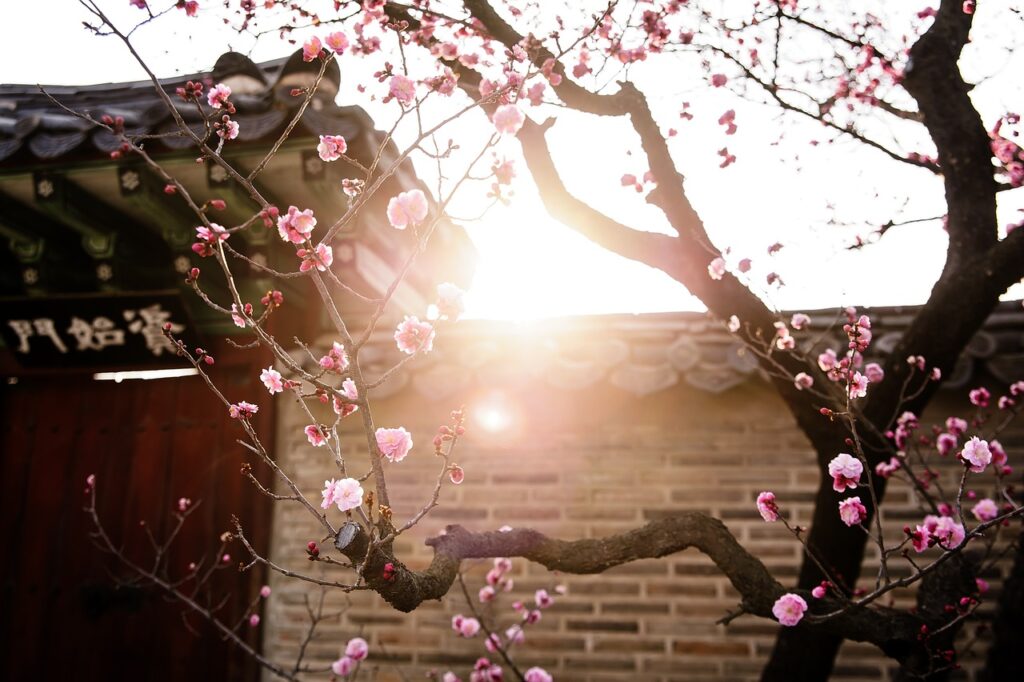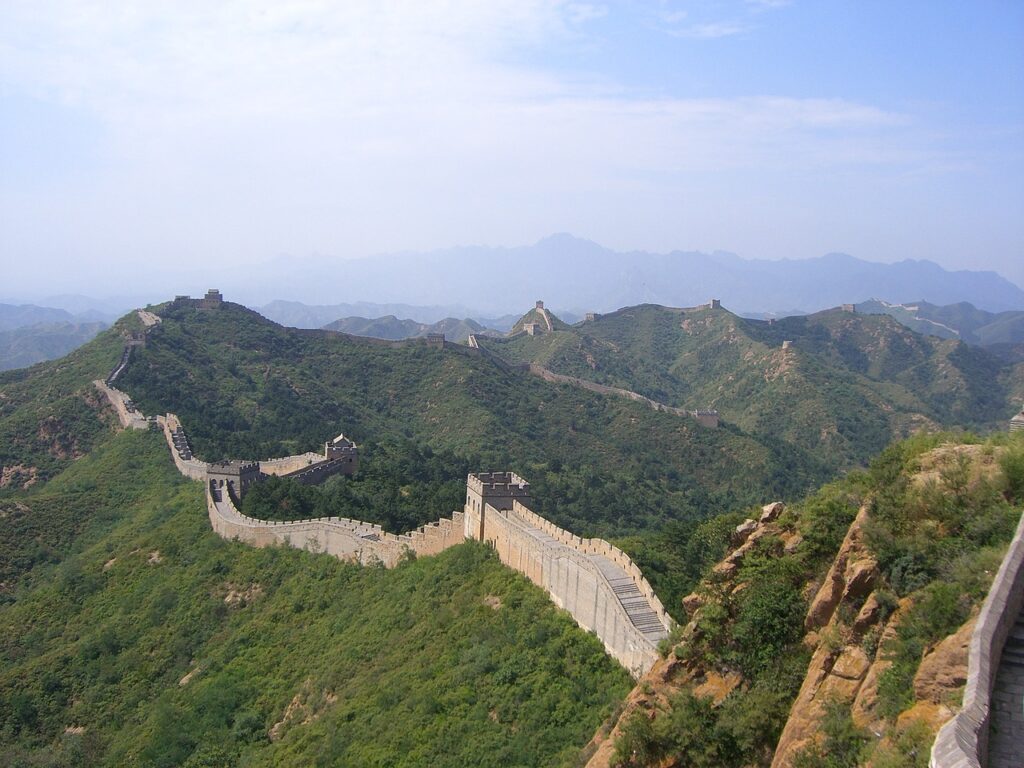China, with its long history and splendid culture, is renowned worldwide for its rich and diverse cultural heritage. Since 1987, numerous cultural heritage sites in China have been inscribed on the UNESCO World Heritage List. As of 2024, China has 56 World Cultural Heritage Sites. These sites not only showcase the glorious achievements of Chinese civilization but also provide valuable cultural assets for the world.
The Forbidden City

The Forbidden City, also known as the Imperial Palace in Beijing, served as the imperial palace during the Ming and Qing dynasties. Construction began in 1406 during the reign of Emperor Yongle of the Ming Dynasty and was completed in 1420. Covering an area of 720,000 square meters, the Forbidden City boasts over 8,700 rooms, including palaces, pavilions, and gates. It is not only a masterpiece of ancient Chinese architecture but also a symbol of the last feudal dynasty in China, the Qing Dynasty. In 1987, the Forbidden City was listed as a World Cultural Heritage Site, becoming one of China’s first World Cultural Heritage Sites.
The Great Wall

The Great Wall is a significant military defense project of ancient China, with construction starting in the 7th century BC. It has undergone numerous reconstructions and extensions, stretching over 21,000 kilometers. The Great Wall begins at Tiger Mountain in Liaoning Province in the east and ends at Jiayuguan Pass in Gansu Province in the west, traversing mountains, valleys, and deserts. The Great Wall is a symbol of the wisdom and strength of the ancient Chinese people and a testament to the historical integration and conflicts among various ethnic groups in China. In 1987, the Great Wall was listed as a World Cultural Heritage Site.
The Temple of Heaven
Located in the southern part of Beijing, the Temple of Heaven was the site where emperors of the Ming and Qing dynasties offered sacrifices to heaven and prayed for a good harvest. Construction began in 1420 during the reign of Emperor Yongle of the Ming Dynasty. Covering an area of approximately 2.73 million square meters, the Temple of Heaven is a remarkable example of ancient Chinese sacrificial architecture. The main structures include the Hall of Prayer for Good Harvests, the Imperial Vault of Heaven, and the Circular Mound Altar, known for their grand scale and exquisite architectural artistry. In 1998, the Temple of Heaven was listed as a World Cultural Heritage Site.
The Summer Palace
The Summer Palace, located in the northwestern suburbs of Beijing, is a representative work of Qing Dynasty imperial gardens. Construction began in 1750 during the reign of Emperor Qianlong and was subsequently restored multiple times due to war. Covering an area of about 2.9 million square meters, the Summer Palace features Kunming Lake and Longevity Hill as its main components, showcasing the essence of Chinese classical garden art. It is acclaimed as the “Museum of Royal Gardens.” In 1998, the Summer Palace was listed as a World Cultural Heritage Site.
The Mogao Caves
The Mogao Caves, located in Dunhuang, Gansu Province, is one of the largest and best-preserved repositories of Buddhist art in the world. Construction of the Mogao Caves began in 366 AD, and they house a wealth of murals, painted sculptures, and manuscripts, representing over a thousand years of Buddhist art from the Sixteen Kingdoms period to the Yuan Dynasty. In 1987, the Mogao Caves were listed as a World Cultural Heritage Site.
The Mausoleum of the First Qin Emperor and the Terracotta Army
The Mausoleum of the First Qin Emperor and the Terracotta Army, located in Xi’an, Shaanxi Province, is one of the largest and most complex tomb structures of ancient China. Construction of the mausoleum began in 246 BC. The Terracotta Army pits contain thousands of lifelike clay soldiers and horses, showcasing the remarkable sculptural art and military organization of ancient China. In 1987, the Mausoleum of the First Qin Emperor and the Terracotta Army were listed as a World Cultural Heritage Site.
The Ancient City of Lijiang
The Ancient City of Lijiang, located in Lijiang, Yunnan Province, is a well-preserved ancient city of the Naxi ethnic group. Founded during the Song Dynasty, Lijiang is known for its unique Naxi culture, ancient city layout, and beautiful natural scenery. The city features many well-preserved ancient buildings and streets, demonstrating the wisdom and creativity of the Naxi people. In 1997, the Ancient City of Lijiang was listed as a World Cultural Heritage Site.
The Ancient City of Pingyao
The Ancient City of Pingyao, located in central Shanxi Province, is one of the best-preserved ancient cities from the Ming and Qing dynasties in China. Founded during the Western Zhou Dynasty, the city was expanded in 1370 during the reign of Emperor Hongwu of the Ming Dynasty. The ancient city contains numerous well-preserved buildings from the Ming and Qing dynasties, such as city walls, government offices, security offices, and commercial establishments, showcasing the urban life and commercial prosperity of ancient China. In 1997, the Ancient City of Pingyao was listed as a World Cultural Heritage Site.
The Classical Gardens of Suzhou
The Classical Gardens of Suzhou, located in Suzhou, Jiangsu Province, are exemplary representatives of Chinese classical garden art. The gardens date back to the Spring and Autumn Period and have undergone construction and expansion over the centuries, forming unique garden styles represented by the Humble Administrator’s Garden, Lingering Garden, and Master of the Nets Garden. Known for their intricate layouts, rich landscapes, and exquisite architecture, the Classical Gardens of Suzhou are renowned worldwide. In 1997, the Classical Gardens of Suzhou were listed as a World Cultural Heritage Site.
The West Lake Cultural Landscape of Hangzhou
The West Lake Cultural Landscape of Hangzhou, located in Hangzhou, Zhejiang Province, is celebrated for its beautiful natural scenery and rich historical and cultural heritage. Surrounded by mountains, the West Lake is dotted with numerous famous scenic spots and historical sites, such as the Su Causeway, Bai Causeway, Leifeng Pagoda, and Three Pools Mirroring the Moon. The West Lake has long been an inspiration for Chinese poets and artists and is an important symbol of traditional Chinese culture. In 2011, the West Lake Cultural Landscape of Hangzhou was listed as a World Cultural Heritage Site.
The Historic Centre of Macao
The Historic Centre of Macao, located in the Macao Special Administrative Region, is a testament to the cultural exchange between the East and the West. Since the mid-16th century, Macao has been an important hub for cultural exchange between China and the Western world. The historic centre preserves many historical buildings with Portuguese and Chinese architectural styles, such as the Ruins of St. Paul’s, A-Ma Temple, and Senado Square. In 2005, the Historic Centre of Macao was listed as a World Cultural Heritage Site.
The Dazu Rock Carvings
The Dazu Rock Carvings, located in Dazu District, Chongqing, are exemplary representatives of late-period Chinese rock carving art. Construction of the Dazu Rock Carvings began during the Tang Dynasty and they are concentrated in Beishan and Baodingshan areas. The carvings depict a rich variety of subjects, including Buddhist, Taoist, and Confucian stories, as well as folklore. Known for their exquisite carving techniques and profound cultural connotations, the Dazu Rock Carvings were listed as a World Cultural Heritage Site in 1999.
The Fujian Tulou
The Fujian Tulou are unique residential buildings located in the southwestern mountainous region of Fujian Province. Built from the Song and Yuan dynasties onwards, the tulou are characterized by their large earthen walls and distinctive circular and square shapes. These buildings served as important communal living and defense structures for the Hakka people. The Fujian Tulou demonstrate the unique charm of traditional Chinese architecture and Hakka culture. In 2008, the Fujian Tulou were listed as a World Cultural Heritage Site.
The Yungang Grottoes
The Yungang Grottoes, located in Datong, Shanxi Province, are exemplary representatives of Chinese Buddhist grotto art. Construction of the Yungang Grottoes began during the Northern Wei Dynasty and includes 45 main caves housing large-scale Buddhist statues and exquisite murals, showcasing the Buddhist art from the Northern Wei to the Sui and Tang dynasties. In 2001, the Yungang Grottoes were listed as a World Cultural Heritage Site.
The Chengde Mountain Resort and its Outlying Temples
The Chengde Mountain Resort and its Outlying Temples, located in Chengde, Hebei Province, are representative works of Qing Dynasty imperial gardens and religious architecture. Construction began in 1703 during the reign of Emperor Kangxi and continued for over 80 years. The complex covers an area of approximately 5.64 million square meters and includes the Mountain Resort, the Eight Outer Temples, and other scenic spots. It is known for its grand scale, exquisite design, and harmonious integration with the natural landscape. In 1994, the Chengde Mountain Resort and its Outlying Temples were listed as a World Cultural Heritage Site.
The Sichuan Giant Panda Sanctuaries
The Sichuan Giant Panda Sanctuaries, located in Sichuan Province, are the largest natural habitat for the giant panda in the world. The sanctuaries include several nature reserves, such as Wolong, Siguniang Mountain, and Jiajin Mountain, which protect numerous rare flora and fauna, particularly the endangered giant panda. In 2006, the Sichuan Giant Panda Sanctuaries were listed as a World Cultural Heritage Site.
Mount Huangshan
Mount Huangshan, located in southern Anhui Province, is renowned for its “five wonders”: peculiar pines, grotesque rocks, sea of clouds, hot springs, and winter snow. Since ancient times, Mount Huangshan has been a source of inspiration for Chinese literati and artists, earning the title of “the most spectacular mountain under heaven.” In 1990, Mount Huangshan was listed as a World Cultural Heritage Site.
Mount Tai
Mount Tai, located in central Shandong Province, is the foremost of the Five Great Mountains of China, celebrated for its majestic natural landscape and profound cultural heritage. Since ancient times, Mount Tai has been an important site for imperial sacrificial ceremonies and a symbol of national unity. In 1987, Mount Tai was listed as a World Cultural Heritage Site.
China’s World Cultural Heritage Sites not only showcase the glorious achievements of Chinese civilization but also provide valuable cultural assets for the world. These cultural heritage sites are not only important symbols of China’s history and culture but also common treasures of human civilization. Protecting and passing down these cultural heritage sites is the responsibility of each and every one of us. By understanding and appreciating these World Cultural Heritage Sites, we can better comprehend the richness and diversity of human civilization. In the future, we should continue to protect these precious cultural heritage sites, allowing them to shine even more brightly in the new era.
